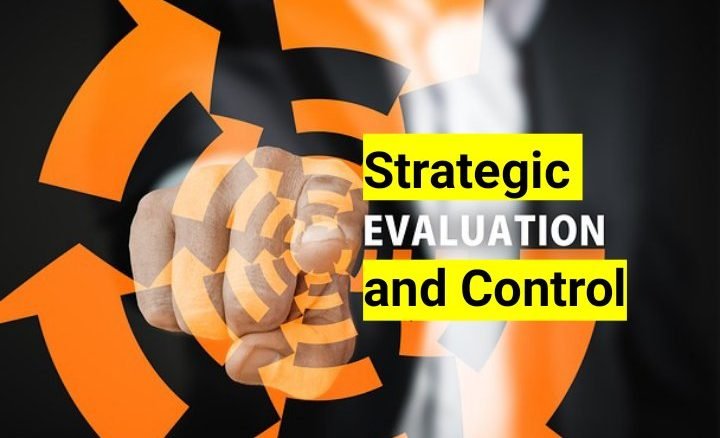
Strategic evaluation and control is a great topic for managers who want to take care of an organization. It is also beneficial to students. On this page, you will learn about strategic evaluation and control, techniques, types and importance.
The essence of conducting strategic evaluation and control is to achieve organizational performance. As a manager, to know the performance of an organization, you have to check the tax performance.
Strategic Evaluation and Control
Strategic evaluation and control is the process of determining the effectiveness of a given strategy in achieving organizational objectives. Also taking corrective action whenever required.
Techniques of Strategic Evaluation and Control

These are the techniques of strategic evaluation and control:
Performance Metrics
The performance Metrics utilize key performance indicators (KPIs) to measure and track progress. It also analyzes financial metrics, customer satisfaction, and internal processes.
SWOT Analysis
The SWOT analysis evaluates strengths, weaknesses, opportunities, and threats to inform strategic decisions. In addition, it identifies internal and external factors affecting the organization.
Balanced Scorecards
The balance scorecards Implement a balanced approach to assess performance across various aspects. It aligns strategic objectives with performance indicators for a comprehensive view.
Environmental Scanning
This technique monitors and analyzes the external environment for emerging trends and competitive insights. It also helps to stay informed about changes in the market, technology, and regulations.
Implementing these techniques in businesses can effectively evaluate their strategies and exercise control measures for sustained success.
Importance of Strategic Evaluation
Strategic evaluation is vital for several reasons:
- It helps assess how well the organization is executing its strategies including retrenchment strategy.
- Identifies areas of success and improvement, enabling informed decision-making.
- Facilitates adaptability to evolving market conditions and emerging trends.
- Allows for timely adjustments to strategies in response to internal and external changes.
- Ensures efficient allocation of resources by identifying areas of underperformance.
- Enables the reallocation of resources to high-priority areas for maximum impact.
- Verifies that implemented strategies align with the organization’s overall objectives.
- Prevents divergence from the intended strategic path.
- Provides a basis for informed decision-making by offering insights into strategy effectiveness.
- Supports the identification of successful tactics and the elimination of ineffective ones.
Types of Strategic Evaluation and Control
1. Premise control
This is the basis for which those strategies are formulated. Here, we look at what we aim to achieve at the end of the day.
It refers to a management process designed to check systematically whether the process on which the strategy is based is valid.
2. Strategic Surveillance Control
This is done by moving from one department to another. Sometimes it can go unannounced. This is to detect if something is going wrong in the organization.
This refers to the management effort to monitor a broad range of events inside and, more often, outside the organization. The organization is likely to affect the cost of each strategy over time.
3. Special Alert Control
This refers to any management action, undertaken thoroughly or very rapidly, that reconsiders an organization’s strategy as a result of an unexpected event.
These unexpected events can be natural disasters, insurgencies, or man-made disasters.
4. Implementation Control
Implementation control refers to a management decision to overhaul all the previous strategies formulated to ascertain their effectiveness and efficiency.
Nature of Strategic Evaluation
Strategic evaluation is a dynamic, ongoing process that involves a thorough analysis of internal and external factors. It serves as a continuous feedback mechanism, ensuring alignment with organizational goals and providing crucial insights for informed decision-making.
The nature of strategic evaluation emphasizes adaptability, comprehensive assessment, and its role as a continuous guide in the ever-evolving business landscape.
What is Strategic Evaluation and Control
It is the process of determining the effectiveness of a given strategy in achieving organizational objectives. It is a tactic that helps boost organizational performance.
What is the Central Purpose of Strategic Evaluation
The core and central purpose of strategic evaluation is to improve organizational activities in all aspects.
In essence, strategic evaluation serves as a compass, guiding organizations towards their goals and fostering resilience in the face of dynamic business environments.
Strategic evaluation and control are crucial components of effective business management. Employing various techniques ensures organizations stay on course and adapt to changing dynamics
